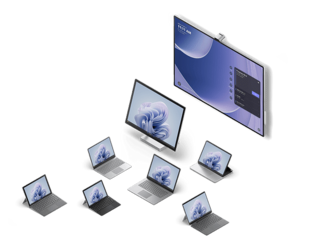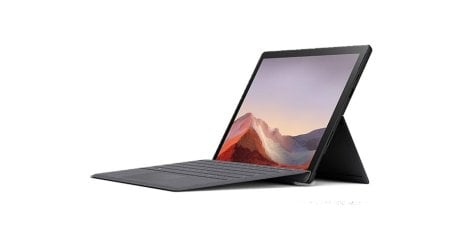Just a decade ago, few people seemingly knew or cared about firmware. But with the increasing interconnectedness of devices and the rise of cybersecurity threats, there’s a growing awareness of firmware as the foundational software that powers everything from smartphones to smart TVs.

Traditionally developed using the C language, firmware is essential for setting up a device's basic functions. As a globally recognized standard, UEFI -- Unified Extensible Firmware Interface enables devices to boot with fundamental security features that contribute to the security posture of modern operating systems.
Call for greater firmware security
As the security of our device operating systems gets more sophisticated, firmware needs to keep up. Security is paramount, but it shouldn't compromise speed or user-friendliness. The goal is clear - firmware that's both fast and secure.
What does this modern approach look like? Let’s start by looking at the key challenges:
- Evolving threat landscape: As operating systems become more secure, attackers are shifting their focus to other system software, and firmware is a prime target. Firmware operates at a very foundational level in a device, and a compromise here can grant an attacker deep control over a system.
- Memory safety in firmware: Many firmware systems have been historically written in languages like C, which, while powerful, do not inherently protect against common programming mistakes related to memory safety. These mistakes can lead to vulnerabilities such as buffer overflows, which attackers can exploit.
- Balance of speed and security: Firmware needs to execute quickly. However, increasing security might introduce execution latency, which isn't ideal for firmware operations.
Rust in the world of firmware
When it comes to modern PC firmware, Rust stands out as a versatile programming language. It offers flexibility, top-notch performance, and most importantly, safety. While C has been a go-to choice for many, it has its pitfalls, especially when it comes to errors that might lead to memory issues. Considering how crucial firmware is to device safety and operation, any such vulnerabilities can be a goldmine for attackers, allowing them to take over systems.
[1] That's where Rust shines. It's designed with memory safety in mind, without the need for garbage collection, and has strict rules around data types and parallel operations. This minimizes the probability of errors that expose vulnerabilities, making Rust a strong choice for future UEFI firmware development.
Unlocking new possibilities with Rust
Rust is not just another programming language; it's a gateway to a wealth of resources and features that many firmware developers might have missed out on in the past. For starters, Rust embraces a mix of object-oriented, procedural, and functional programming approaches and offers flexible features like generics and traits, making it easier to work with different data types and coding methods. Many complex data structures that must be hand-coded in C are available “for free” as part of the Rust language. But it's not just about versatility and efficiency. Rust's tools are user-friendly, offering clear feedback during code compilation and comprehensive documentation for developers. Plus, with its official package management system, developers get access to tools that streamline coding and highlight important changes. One of those features is Rust's use of 'crates' – these are like ready-to-use code packages that speed up development and foster collaboration among the Rust community.
Making the move from C to Rust
Rust stands out for its emphasis on safety, meaning developers often don't need as many external tools like static analyzers, which are commonly used with C. But Rust isn't rigid; if needed, it allows for exceptions with its "unsafe code" feature, giving developers some flexibility. One of Rust's advantages is how well it interacts with C. This means teams can start using Rust incrementally, without having to abandon their existing C code. So, while Rust offers modern advantages, it's also mindful of the unique requirements of software running directly on hardware -- without relying on the OS or other abstraction layers. Plus, it offers compatibility with C's data structures and development patterns.
The Trio: Surface, Project Mu and Rust
Surface with Windows pioneered the implementation of Project Mu in 2018 as an open-source UEFI core to increase scalability, maintainability, and reusability across Microsoft products and partners. The idea was simple but revolutionary, fostering a more collaborative approach to reduce costs and elevate quality. It also offers a solution to the intricate business and legal hurdles many partners face, allowing teams to manage their code in a way that respects legal and business boundaries. A major win from this collaboration is enhanced security; by removing unnecessary legacy code, vulnerabilities are reduced. From its inception, Surface has been an active contributor, helping Project Mu drive innovation and improve the ecosystem.
Pioneering Rust adoption through Project Mu and Surface
Surface and Project Mu are working together to drive adoption of Rust into the UEFI ecosystem. Project Mu has implemented the necessary changes to the UEFI build environment to allow seamless integration of Rust modules into UEFI codebases. Surface is leveraging that support to build Rust modules in Surface platform firmware. With Rust in Project Mu, Microsoft's ecosystem benefits from improved security transparency while reducing the attack surface of Microsoft devices due to Rust’s memory safety benefits. Also, by contributing firmware written in Rust to open-sourced Project Mu, Surface participates in an industry shift to collaboration with lower costs and a higher security bar. With this adoption, Surface is protecting and leading the Microsoft ecosystem more than ever.
Building together: Surface's commitment to the Rust community
Surface and Project Mu plan to participate in the open Rust development community by leveraging and contributing to popular crates and publishing new ones that may be useful to other projects. A general design strategy is to solve common problems in a generic crate that can be shared and integrated into the firmware. Community crates, such as r-efi for UEFI, have already been helpful during early Rust development.
Getting Started
Project Mu has made it easier for developers to work with Rust by introducing a dedicated container in the Project Mu Developer Operations repository (DevOps repo). This container is equipped with everything needed to kickstart Rust development. As more Rust code finds its way into Project Mu's repositories, it will seamlessly integrate with the standard Rust infrastructure in Project Mu, and the dedicated container provides an easy way to immediately take advantage of it.
The Project Mu Rust Build readme details how to begin developing with Rust and Project Mu. Getting started requires installing the Rust toolchain and Cargo make as a build runner to quickly build Rust packages. Refer to the readme for guidance on setting up the necessary build and configuration files and creating a Rust module.
Demonstrating Functionality
QEMU is an open-source virtual machine emulator. Project Mu implements open-source firmware for the QEMU Q35 platform in its Mu Tiano Platforms repository. This open virtual platform is an easily accessible demonstration vehicle for Project Mu features. In this case, UEFI (DXE) Rust modules are already included in the platform firmware to demonstrate their functionality (and test it in CI).
Looking ahead
With the expansion of firmware code written in Rust, Surface looks forward to leveraging the Project Mu community to help make our firmware even more secure. To get involved with Project Mu, review the documentation and check out the Github repo. Regularly pull updates from the main repo, keep an eye on the project's roadmap, and stay engaged with the community to remain informed about changes and new directions.
Footnotes
1. See Trends, challenge, and shifts in software vulnerability mitigation
References
Source:

Rust support for UEFI development through Project Mu
See how Surface is innovating to strengthen security for modern devices
techcommunity.microsoft.com























